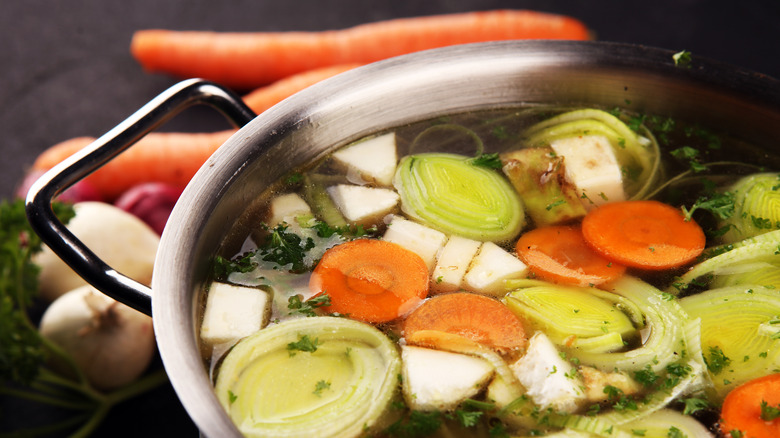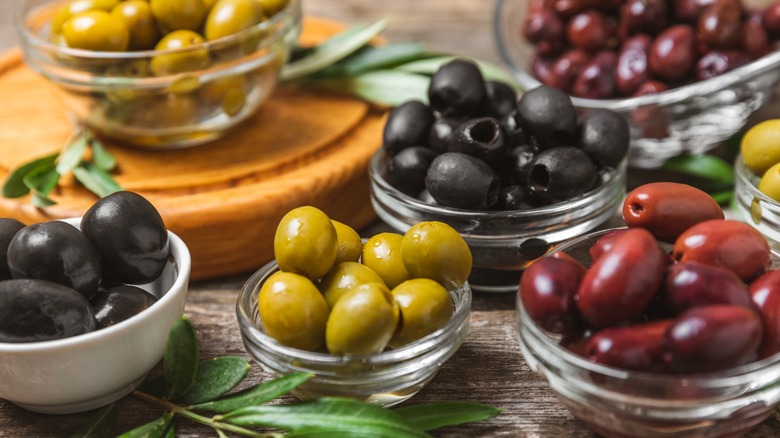Add Olives To Enhance Homemade Veggie Stock With Tons Of Umami Flavor
Stock is a building block for flavor. Whether it's used as the base ingredient in soups and stews or as a taste-enhancing cooking liquid, it improves any recipe it's added to. Yet, while it's usually meat-based recipes that have a reputation for being riddled with richness and nuanced flavor, that doesn't mean that vegetable stocks can't be as complex. In fact, adding a few olives to the stockpot can be all it takes to transform a bland veggie stock into a liquid that's layered with deliciously savory depth.
Part of making a good veggie stock from scratch is using an abundance of vegetables. Given that vegetables have such a high concentration of water, they infuse stock more delicately than pieces of meaty protein or bones, which is why using lots and lots of produce is a must. The other half of the equation is choosing vegetables with punchy and prominent flavors, honing in on particularly important components of taste like umami.
Responsible for activating salivary glands and making foods taste better as a result, the presence of umami is what makes a stock successful. That said, in the absence of umami-dense meat, vegetables with a high degree of naturally occurring glutamates can still deliver umami — this is where olives come in. Offering an almost meaty texture and flavor, olives are distinctly savory. Earthy with a salty edge (thanks to brining and curing), they easily provide that umami hit, which makes them deserving of a place in any homemade veggie stock.
A guide to making olive-laced vegetable stock
From buttery Castelvetrano to vegetal mission and punchy Taggiasca varieties, all types of olives can be used to flavor a made-from-scratch veggie stock. However, seeking out options with especially savory profiles pays off. If you're at a loss over which to select, varieties such as the smoky kalamata, earthy nyon, and woodsy Thassos are all great choices. But any type of dark olive with shriveled skin will generally possess the meaty qualities you're seeking.
Whether you use whole or pitted olives is up to you. You can even opt for stuffed olives — garlic or pimento fillings are fine, but steer clear of cheese as it will curdle in stock. Olive pits will impart a dimension of fruitiness, along with a pleasant bitterness similar to that of stone fruit pits. For a burst of tang and acidity, feel free to drizzle in some brine, as well.
As for how many olives to add, it just depends on preference. We recommend working with no more than a handful. Simply add them into a stockpot with the rest of your produce. Then, cover with water, stir, and bring to a boil before reducing the heat to a simmer. After a couple of hours or so, strain the stock and use the tasty liquid however you see fit. The only question that remains is, will you put this flavorful, umami-laden, olive-laced stock to use in a soup, a stew, a risotto, or something else entirely?

